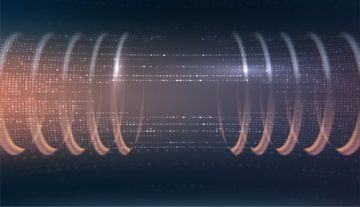Andrew Sornborger and Andreas Albrecht in Scientific American:
 If you could look closely enough at the objects that surround you, zooming in at magnifications far beyond those you could ever see with most microscopes, you would eventually get to a point where the familiar rules of your everyday experiences break down. At scales where blood cells and viruses seem enormous and molecules come into view, things are no longer subject to the simple laws of physics that we learn in high school.
If you could look closely enough at the objects that surround you, zooming in at magnifications far beyond those you could ever see with most microscopes, you would eventually get to a point where the familiar rules of your everyday experiences break down. At scales where blood cells and viruses seem enormous and molecules come into view, things are no longer subject to the simple laws of physics that we learn in high school.
Atoms—and the electrons, protons and neutrons they are made of—don’t exist in the same way a marble does. Instead they are smeared in clouds that are difficult to understand and impossible to describe without the complex mathematics of quantum mechanics.
And yet atoms make up molecules, which, in turn, are the building blocks of marbles and everything else we touch and see each day. Nature has clearly found some way of suppressing quantum behavior when quantum objects are assembled into the familiar ones all around us.
How can things that obey the classical laws of physics—such as a pitched baseball or a bumblebee in flight—be composed of parts that are subject to quantum rules at minute levels? That is one of the deepest questions in modern physics. In pursuit of an answer, recent research—with funding from the High Energy Physics program at the Department of Energy’s Office of Science—should help shed light on how the classical world emerges from the underlying quantum one.
More here.
